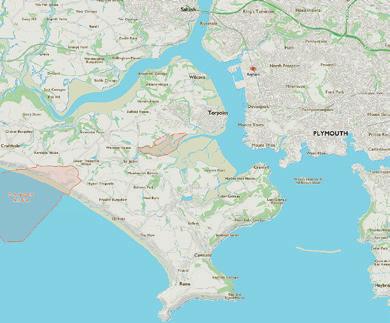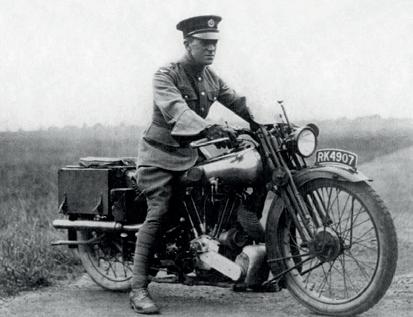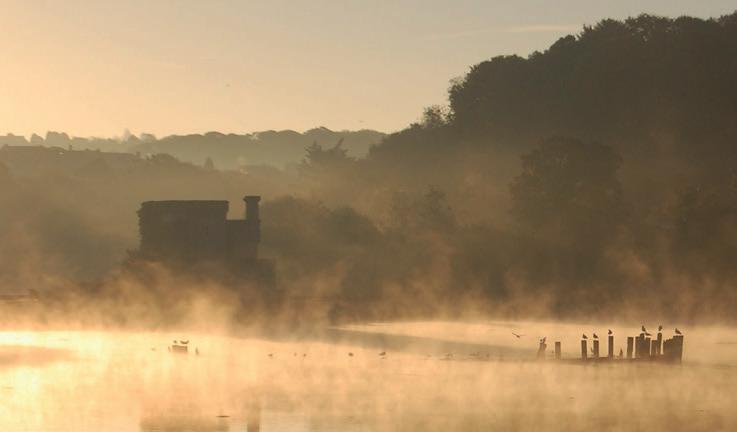
8 minute read
Two Alexanders, a Lawrence, a Winston and a fascinating history Across the Sound from the famous Plymouth Hoe and Barbican, we explore the fascinating history and people of Mount Batten, Oreston and Turnchapel


Advertisement
plymouth
Two Alexanders, a Lawrence, a Winston and a fascinating history




Plymouth is renowned for its historic Hoe, the Elizabethan Barbican and the Sound, one of the world’s greatest natural harbours. Yet a visit to a largely under-explored part of Plymouth can reveal hidden history, fi ne buildings and a very strong sense of community. Helipad’s Neil Devons takes us on a tour of Mount Batten, Oreston and Turnchapel
To the south-east of the city across the Cattewater where the river Plym fl ows into Plymouth Sound lies Mount Batten - known for years as an RAF Flying Boat Station and now home to a water sports and activities centre.
You can get to Mount Batten either by water taxi from Phoenix Wharf on the Barbican or by passing though the communities of Hooe and nearby Turnchapel. Along with Oreston on the southern bank of the Cattewater, these delightful locations have retained the feel of waterside villages although, in reality, they are now suburbs of Plymouth.
Flying boats, Churchill and Aircraftman Shaw
Mount Batten is a landmark in every sense. Surrounded by water, this small peninsula is an 80 foot high rocky outcrop with a 17th century artillery tower and a pier that acts as a breakwater, Mount Batten was home to fl ying boats and other air-sea activities for 73 years until it fi nally closed in 1986. Its association with aviation began in 1913 with trial fl ights before it became a Royal Naval Air Station in 1917. A year later this service merged with the Royal Flying Corps to form the RAF and the installation was renamed RAF Cattewater and renamed again in 1928 to RAF Mount Batten. The fi rst ever airborne crossing of the Atlantic took place in 1919 and culminated in one of the three United States Curtis Flying boats that had fl own from New York landing at Mount Batten after several stops on the way. In 1986, a fl ight of two PBY Catalinas re-enacted that crossing and the crowds on Plymouth Hoe witnessed the sight of one of them hitting a buoy as it ‘landed’ in front of them and nearly sank. Fortunately no one was badly injured and the fl ying boat was taken to the Sunderland hangars at Mount Batten to be repaired. Many diff erent classes of fl ying boat were stationed at RAF Mount Batten but none more famous than the Short Sunderland built for long range reconnaissance. Just days after the start of World War II, on September 9th 1939 a Sunderland piloted by Flight-Lieutenant Barrett dropped bombs on a German U-Boat and recued the entire crew of the stricken SS Kensington Court which had been hit by a torpedo. Barrett was awarded the Distinguished Flying Cross (DFC) at the very fi rst wartime investiture. Another notable fl ight landed at Mount Batten in January 1942 when a Boeing Berwick fl ying boat arrived from the USA carrying Winston Churchill. It is said he took over the






fl ight controls for part of the journey which was not related to the scrambling of six Hurricanes from Fighter Command who were ordered to shoot the fl ying boat down when it appeared from an unexpected direction and was deemed to be an approaching enemy. One of the most famous people in the world served at RAF Mount Batten as an ordinary aircraftsman. T.E. Lawrence, better known as Lawrence of Arabia, became sick of his celebrity after his military exploits in the First World War and, in 1922, enlisted in the RAF as Aircraftsman Ross and enlisted again in 1923 under the pseudonym Shaw. In 1925 he served at Mount Batten in the Marine Branch where he was involved in the development of air-sea rescue launches. He left Mount Batten in 1933 and was killed two years later in a motor bike accident. There are two roads – Shaw Way and Lawrence Road – named after him in Mount Batten. Today Mount Batten is a place for visitors to enjoy the water sports, boat trips, sea air and, above all, the stunning views.
T.E. Lawrence, an accomplished motorcyclist in his time
Turnchapel – a hidden gem
While many of the traditional communities of Plymouth have faded into city suburbs, Turnchapel, located on the waterside beneath Mount Batten, holds on to a strong identity and sense of community that ensures it remains an identifiable village.
Its strategic location means it has a rich maritime heritage and history of ship-building particularly when Napoleon threatened our shores and Lord Boringdon built a dry dock there. The name Boringdon recurs a lot in the history of Turnchapel. John Parker, the 1st Earl of Morley was also known as Baron Boringdon and his legacy lives on in the guise of the elegant Georgian Boringdon Terrace and the legendary Boringdon Arms public house, once the quarry master’s house.
It was from Turnchapel that sea pilots would race their cutters to be the first to intercept incoming vessels and it was from the waters off the village that many cable laying ships would commence their voyages. One such, the CS Macky Bennet became famous as a ’funeral ship’ for the role it played in recovering bodies from the Titanic disaster. It was retired in 1922 and left as a storage hulk just off Turnchapel and was bombed in World War II before being scrapped in 1965.
The old shipyard became a naval oil tank depot which was a victim of another German bomb, the conflagration killing several firemen. The slipway was used to embark US troops for the D-Day landing with the site eventually becoming a Royal Marine base. Later, the village was to take on a full role in the 1995 50th anniversary celebrating VE day. Locals put shatter-proof sticky tape on their windows, one house converted into a 1940s style ice cream parlour, the party atmosphere meant a lot of bunting, sing-songs and dressing up - and the pubs only sold Spam and chips.
Covid-19 has sadly put an end to many anticipated events including what Turnchapel and the City of Plymouth had planned for Mayflower 400 but, as soon as it’s possible, there is no doubt this vibrant little community will resume its programme of summer street music and Christmas festivals.
Turnchapel with the Cable Ship Mackay moored in the foreground






A distinguished resident
Alexander Burns Usborne (1809-1885) was a famous maritime figure of his day. Having joined the navy at 16, he rose through the ranks to become Surveyor and then Master of HMS Beagle accompanying Charles Darwin on his historic voyage in 1831. He retired a Captain in 1867 and made his home in Whitestock Villa in Turnchapel.
Hooe’s there
On you way to Mount Batten and Turnchapel, you’ll pass through another pleasant community at Hooe. Once dominated by its former quarries Hooe is noted for its two lakes, the tidal Hooe Lake and the freshwater Radford Lake, both rich in wildlife and both designated by Natural England as Country Wildlife Sites (CWS). The adjacent Radford Park is situated in the grounds of the former Radford House, a grand Tudor building now long gone, and can boast an arboretum and some historic ruins Including the deteriorating Radford Castle. The Erme-Plym Way passes through the park and the South West Coast Path passes over the causeway between Radford and Hooe Lakes.




Eventful Oreston
Like its near neighbours at Hooe and Turnchapel, Oreston once had quarries that supplied the limestone to build Plymouth’s breakwater. It has a very pleasant waterside location on the South West Coast Path. There is a strong tradition of events in Oreston with regattas and competitions organised by the Plym Yacht Club in the water or, on the quayside, such as concerts and its spectacular carnival. Although Oreston now only has one pub, there had been several more before the fi rst world war. In 1720, the Old Inn was kept by the widow Francis Candish who it is said married Alexander Selkirk an itinerant and wayward sailor. Selkirk was quite the celebrity having been marooned alone on an island, surviving for over four years. He became even more of a legend when Daniel Defoe based the character of Robinson Crusoe on his exploits. The marriage didn’t last long. Selkirk went back to sea and was dead within a year from yellow fever – or was it something in the beer?
Hooe Lake











